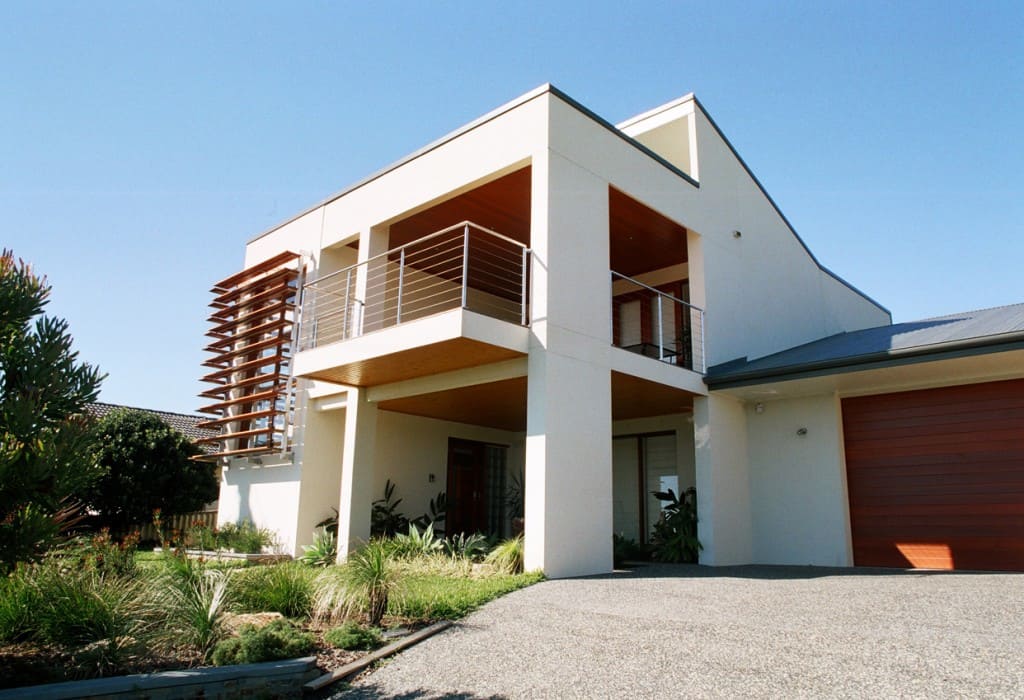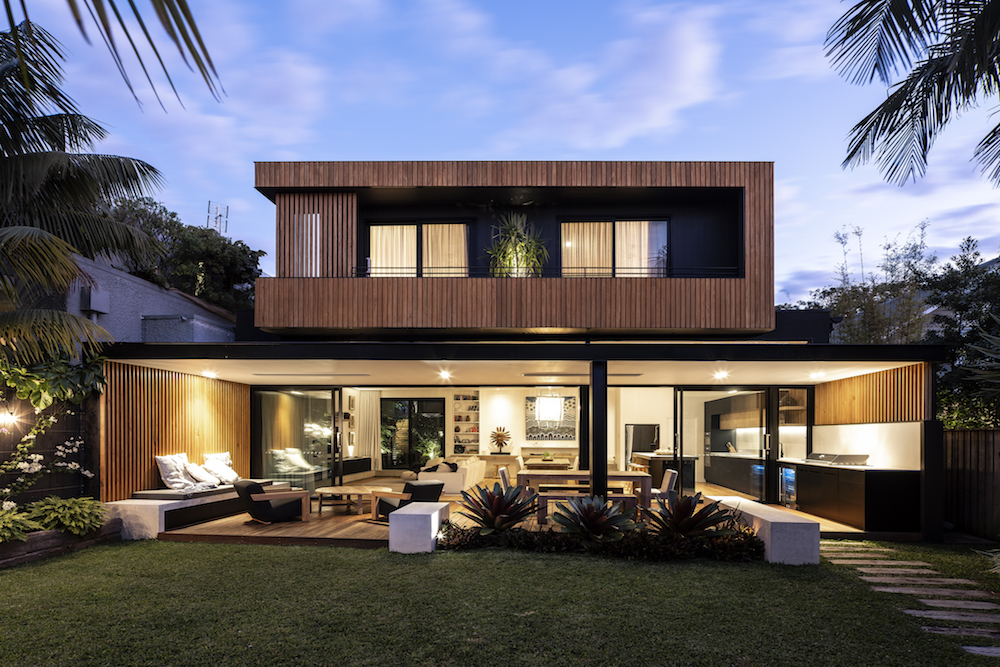Expert Residential Architects to Design Your Dream Home with Precision and Style
Expert Residential Architects to Design Your Dream Home with Precision and Style
Blog Article
Top Patterns in Residential Design You Need To Find Out About
As residential architecture continues to develop, several engaging fads are forming the method we make and occupy our home. Key advancements such as sustainable structure methods, the assimilation of smart home innovation, and the rise of modular homes underscore a significant change towards both functionality and ecological responsibility. Furthermore, ideas like open plan living and biophilic design are redefining our communication with room and nature. Recognizing these patterns not just educates design options yet also exposes wider implications for way of life and neighborhood - residential house architect. What might these developments suggest for the future of residential living?
Lasting Structure Practices
An increasing number of property projects are embracing sustainable structure practices, driven by an expanding awareness of environmental effect and power effectiveness. This shift is characterized by the integration of environment-friendly materials, energy-efficient designs, and cutting-edge building techniques. Home builders and house owners are significantly focusing on the usage of sustainable resources, such as bamboo and recycled metals, which not only minimize the carbon impact however also improve the resilience and visual appeal of buildings.
Integrating energy-efficient systems is another vital aspect of sustainable structure - residential house architect. Attributes such as high-performance insulation, energy-efficient home windows, and solar panels are ending up being standard in brand-new property styles. These aspects not only add to reduced energy usage yet likewise supply significant lasting cost savings for homeowners
Furthermore, the design of sustainable homes commonly emphasizes natural light and ventilation, lowering the dependence on artificial lights and climate control systems. Landscape design practices, such as xeriscaping, further promote sustainability by minimizing water usage.
As the need for sustainable living services remains to climb, the household architecture field is poised to introduce and adapt, making sure that future homes are not only environmentally accountable but likewise comfy and functional for their passengers. - residential house architect
Smart Home Modern Technology
Smart home innovation is changing the means property owners connect with their space, boosting ease, protection, and power management. This cutting-edge technique incorporates numerous tools and systems, permitting individuals to regulate their homes from another location or through automated processes. Central to this pattern is using smart tools such as thermostats, lighting, safety video cameras, and appliances, all connected by means of the Internet of Points (IoT)
One of the most attractive attributes of clever home modern technology is the capacity to tailor setups for ideal energy performance. House owners can check power usage and change air conditioning, lighting, and heating based upon their regimens, dramatically minimizing utility expenses. Moreover, advanced safety and security systems furnished with smart locks and monitoring electronic cameras supply assurance, allowing remote monitoring and signals to potential safety violations.
Assimilation with voice-activated aides improves customer experience, allowing house owners to regulate devices with easy voice commands. As modern technology remains to evolve, the capacity for smart home systems to improve lifestyle expands, making them an essential consideration in modern household architecture. Eventually, clever home innovation is not merely a trend yet a basic change towards more intelligent living environments.
Open Idea Living
Open concept living has actually become a specifying function in contemporary residential architecture, characterized by the elimination of standard obstacles between areas. This style ideology promotes fluidness and connection within the home, permitting for a seamless shift in between locations such as the cooking area, eating, and living areas. By getting rid of dividings and wall surfaces, open concept formats create a feeling of space, fostering a welcoming atmosphere that improves social communication.

Moreover, this strategy to domestic layout aligns with minimalism, concentrating on functional simplicity and visual coherence. Homeowners value the flexibility of these designs, which can be conveniently adapted to reflect personal style through furniture setup and design. As open idea living proceeds to acquire traction, it remains a testimony to developing household characteristics and the wish for homes that boost connection and comfort.
Biophilic Style
Biophilic style has actually come to be increasingly considerable in property style, stressing the inherent link between humans and nature. This design ideology seeks to integrate natural components right into living spaces, therefore cultivating a sense of health and enhancing the top quality of life for owners. By incorporating features such as all-natural light, plants, and natural materials, biophilic style promotes an unified connection in between indoor atmospheres and the environment.
Crucial element of biophilic design consist of huge windows that offer unhampered views of outdoor landscapes, living wall surfaces that present plant into interiors, and open layout that encourage air flow and natural light penetration. Water features, both inside and outside the home, serve to produce soothing ambiences and boost sensory experiences.
Additionally, using lasting products not just sustains environmental stewardship however also adds to much healthier indoor air top quality. As awareness of ecological concerns increases, house owners are increasingly prioritizing layouts that mirror their link to nature. Essentially, biophilic layout not just raises aesthetic charm however additionally addresses mental and psychological demands, making it a crucial pattern in contemporary domestic design.
Modular and Prefab Homes

Additionally, modular and prefab homes are designed with sustainability in mind. Numerous manufacturers make use of energy-efficient systems and eco-friendly products, such as photovoltaic panels and progressed insulation methods, adding to lowered power consumption and lower utility bills for house owners. The adaptability of layout options allows for customization, providing to diverse aesthetic preferences and functional needs.
As the need for inexpensive real estate remains to climb, modular and prefab homes provide a sensible service, dealing with both economic and ecological challenges. Communities are increasingly acknowledging the potential of these structures, incorporating them into city and rural settings. In general, the trend towards modular and prefab homes indicates a change toward more lasting, effective, and versatile living environments, making them a critical facet of contemporary property architecture.
Final Thought
Finally, the progressing landscape of residential design showcases substantial trends that prioritize sustainability, modern technology, and well-being. Lasting building methods and clever home technologies enhance effectiveness and benefit, while open principle living and biophilic design foster social communication and a link to nature. The surge of modular and prefab homes provides customizable and economical remedies, mirroring a broader change towards useful and accountable living. These patterns jointly highlight a commitment to developing harmonious and innovative household settings.
Secret advancements such as sustainable structure methods, the integration of smart home modern technology, and the rise of modular homes residential architecture homes underscore a significant shift towards both capability and environmental obligation.The rise of modular and prefab homes has changed the property style landscape, offering ingenious remedies for reliable and sustainable living.Furthermore, modular and prefab homes are developed with sustainability in mind. On the whole, the fad toward prefab and modular homes indicates a change towards extra lasting, reliable, and adaptable living atmospheres, making them a pivotal facet of contemporary property design.
Lasting structure methods and smart home technologies boost performance and comfort, while open concept living and biophilic layout foster social communication and a link to nature.
Report this page